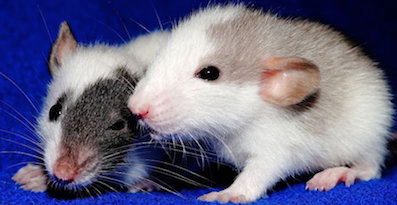 Cleanzine: your weekly cleaning and hygiene industry newsletter 18th April 2024 Issue no. 1110
Cleanzine: your weekly cleaning and hygiene industry newsletter 18th April 2024 Issue no. 1110
Your industry news - first
The original and best - for over 20 years!
We strongly recommend viewing Cleanzine full size in your web browser. Click our masthead above to visit our website version.
Innovative safety assessment techniques avoid animal testing
 Research methods that used innovative non-animal techniques for filling hazard data gaps for 261 high production volume chemicals, eliminated the need for over 1,200 animal tests that would have sacrificed 115,000 to 150,000 animals, according to a newly published study.
Research methods that used innovative non-animal techniques for filling hazard data gaps for 261 high production volume chemicals, eliminated the need for over 1,200 animal tests that would have sacrificed 115,000 to 150,000 animals, according to a newly published study.
Available in the journal 'Regulatory Toxicology & Pharmacology', it describes how these non-animal methods employed within voluntary chemical programmes helped avoid the use of animals for testing. The research also showed that between $50 million and $70 million [US] in associated testing costs were avoided.
The paper, authored by scientists at the American Cleaning Institute, utilised techniques known as 'read-across' and 'in silico'.
Read-across is a well-established, scientifically-justified method of filling data gaps where data of one or more chemicals are used to predict the same outcome for a structurally similar chemical where there is predictability in physicochemical properties, environmental fate, or toxicological and ecotoxicological properties. In silico techniques include the use of computer models to predict, in this case, hazard characteristics.
The chemical assessments were performed under two voluntary high production volume chemical (chemicals produced or imported in volumes of over one million pounds per year) programmes: the Environmental Protection Agency's HPV Challenge programme and the International Council of Chemical Associations HPV Chemical Initiative.
"ACI and the industry demonstrated its adherence to the principles of the 3Rs for the more ethical use of animals - replacement, reduction and refinement - in creating and making publicly available hazard datasets for 261 chemicals," said lead author Kathleen Stanton, ACI director, Technical & Regulatory Affairs. "By grouping chemicals into structurally similar, scientifically-justified categories, we were able to use well-researched substances to supplement data for similar substances with less data."
Significant savings were also realised by using modeled data to fulfill physical-chemical data requirements.
"It is estimated that 3.7 million dollars were saved through the use of computer models to fill gaps in chemical data sets, such as for melting and boiling points," noted co-author Dr. Francis Kruszewski, ACI senior director, Human Health & Safety.
Kathleen Stanton added: "To our knowledge, this is the first study to quantify actual benefits using read-across and other non-animal testing techniques to fill data gaps for structurally similar substances for hazard assessment.
"We hope the realised benefits in using these approaches resonate with regulators and industry safety experts whose job it is to assess the necessity for animal testing in situations where scientifically justified chemical categories exist. Hopefully, this will allow for reliable read-across to be performed, and non-animal testing methods can be used to predict hazard endpoints."
Image courtesy of PETA
The paper, "Quantifying the benefits of using read-across and in silico techniques to fulfill hazard data requirements for chemical categories," is available online at:
T: 202.662.2517
E: [email protected]
www.cleaninginstitute.org
6th October 2016







